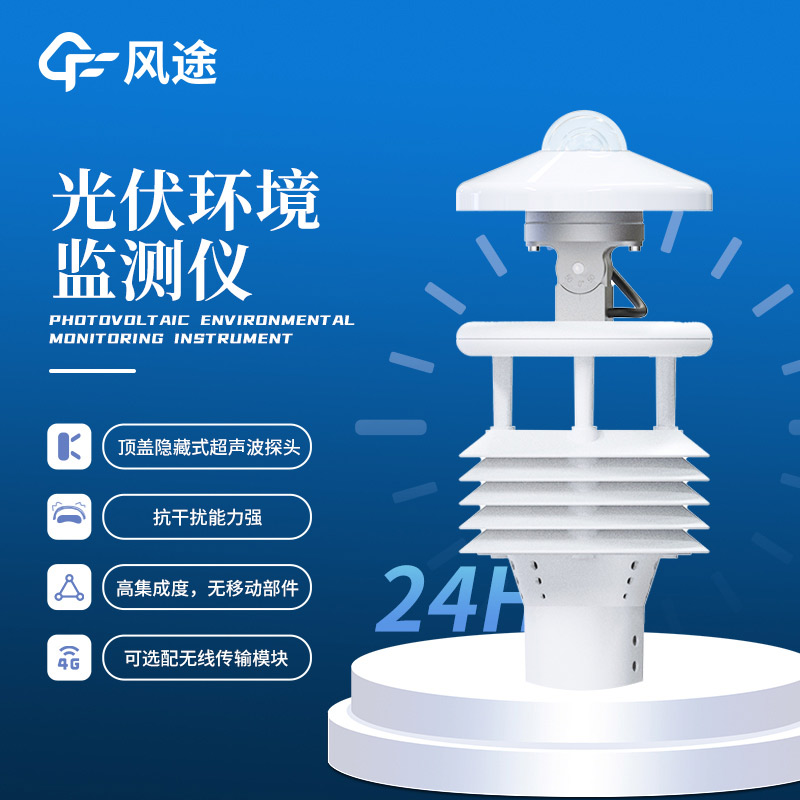Tianqiong Sensor IOT Technology Co., Ltd
Sales Manager:Ms. Emily Wang
Cel,Whatsapp,Wechat:+86 15898932201
Email:info@fengtutec.com
Add:No. 155 Optoelectronic Industry Accelerator, Gaoxin District, Weifang, Shandong, China

Sales Manager:Ms. Emily Wang
Cel,Whatsapp,Wechat:+86 15898932201
Email:info@fengtutec.com
Add:No. 155 Optoelectronic Industry Accelerator, Gaoxin District, Weifang, Shandong, China
time:2025-05-26 09:46:43 source:Weather Station viewed:166 time
Photovoltaic weather stations are professional monitoring devices specifically designed for the photovoltaic industry, capable of real-time and precise measurement of multiple key parameters. Among them, the measurement of thermoelectric total radiation parameters can obtain comprehensive energy data of heat and electricity in solar radiation, helping analyze the utilizable potential of solar energy resources. The daily cumulative radiation of total radiation records the total solar radiation throughout the day through continuous monitoring, providing an important basis for power generation estimation and operation efficiency evaluation of photovoltaic power plants. The measurement of component temperature (backplane temperature) can timely grasp the temperature changes of photovoltaic components. Excessively high temperatures will lead to a decrease in the power generation efficiency of components, and monitoring this parameter can effectively prevent component damage caused by overheating and ensure the safe and stable operation of equipment.
The power generation efficiency of photovoltaic power plants is closely related to meteorological conditions, so meteorological monitoring is indispensable. The amount of solar radiation directly determines the power generation capacity of photovoltaic components. By monitoring thermoelectric total radiation and daily cumulative total radiation, power plants can analyze the distribution of solar energy resources and reasonably plan power generation schedules. Component temperature (backplane temperature) is affected by meteorological factors such as ambient temperature and solar radiation intensity. Excessively high temperatures can cause the hot spot effect in components, reducing power generation efficiency and service life. By monitoring component temperature, maintenance personnel can timely take cooling measures to improve the power generation efficiency and economic benefits of power plants. Meteorological monitoring data can also be used to evaluate the long-term operational performance of photovoltaic power plants, provide a scientific basis for equipment selection and power plant site selection, and help the sustainable development of the photovoltaic industry.

A School Weather Station is a comprehensive device established on campus that can automatically, continuously, and in real-time observe and record various meteorological elements. Composed of sensors, data loggers, power supply systems, communication modules, and data display platforms (such as camp...
In daily meteorological monitoring, Tianqiong Technology's Portable Weather Station has become a reliable "meteorological monitoring expert" around people with its solid performance.It boasts comprehensive monitoring capabilities. The device integrates a variety of high-precision senso...
In the field of photovoltaic power generation, accurate environmental data monitoring is crucial for improving power generation efficiency, and all of this is inseparable from reliable professional equipment.The Photovoltaic Weather Station FT-WQX8B is a comprehensive environmental monitoring device...
In the fields of meteorological monitoring and hydrology, the piezoelectric rain gauge and the Radar Precipitation Sensor Rain Gauge Distrometer are commonly used rainfall monitoring devices. Today, the author will compare the differences between the two.The piezoelectric rain gauge works by u...